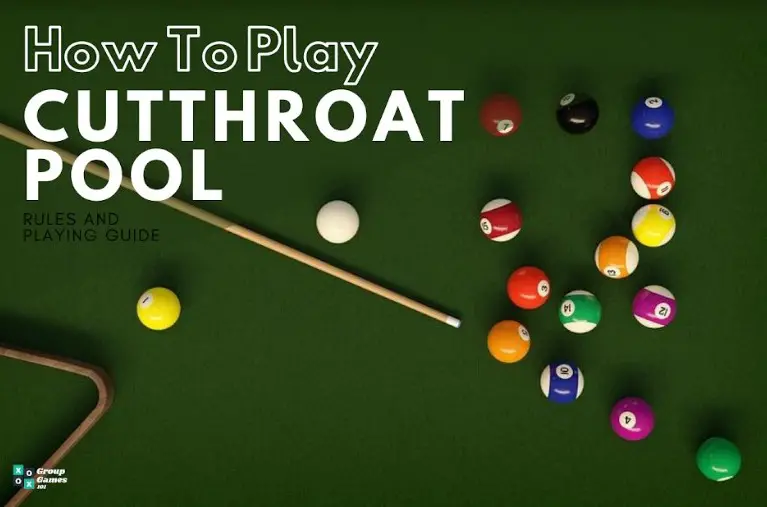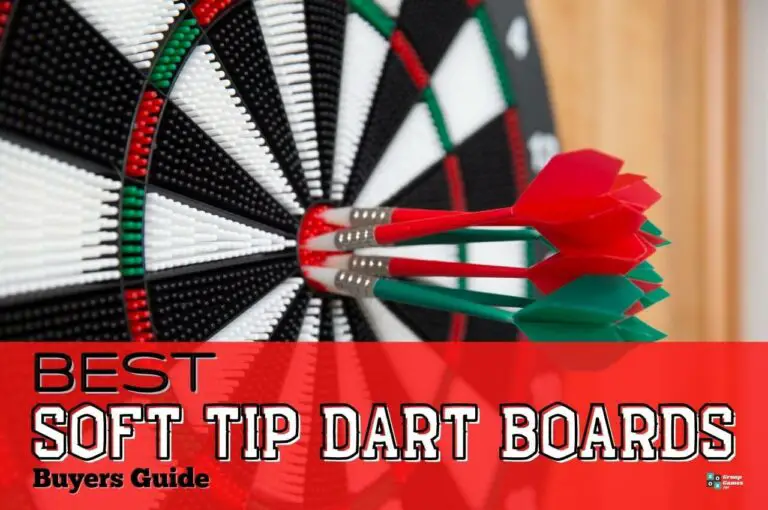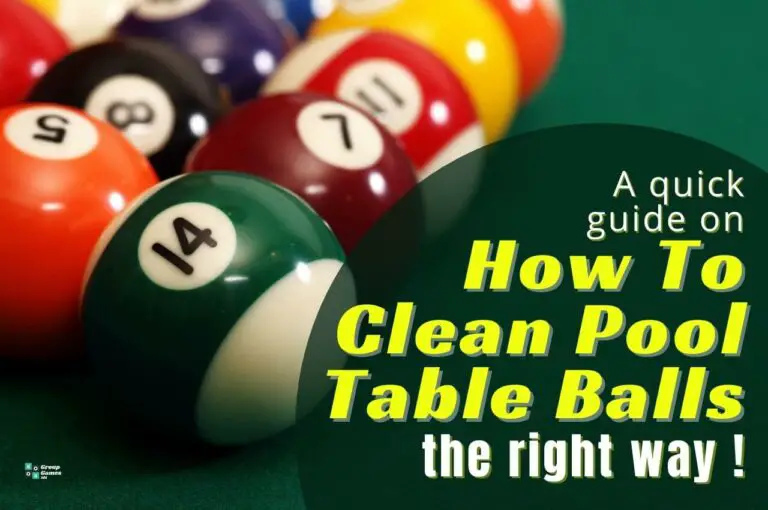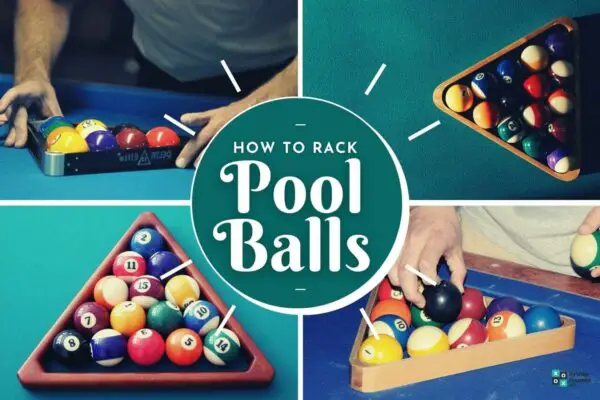For a relaxed night with friends and fun, what’s better than a game with a killer name and chill rules?
One of the few pool games that welcomes a bunch of friends together, Cutthroat pool, may sound highly competitive but is as easy as billiards can get. Although this game doesn’t have a tournament to its name, it is recognized by the World Confederation of Billiards Sports.
Commonly known as ‘Third Man Elimination,’ Cutthroat, with its multiplayer variations and method of elimination, is also widely used as a reference to outdoor games such as ‘Cutthroat American Handball.’
What is Cutthroat Pool?
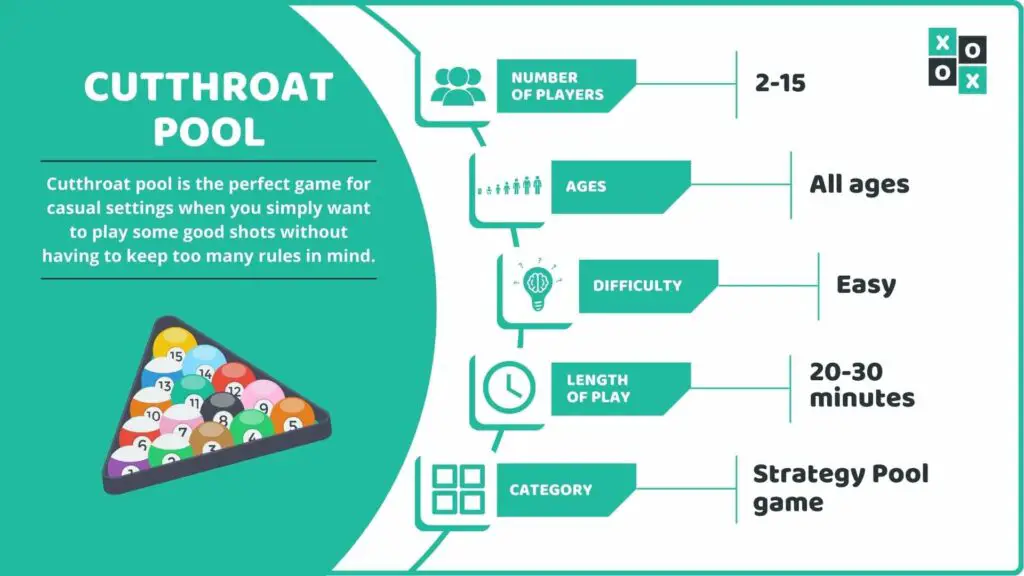
Cutthroat pool is a game of elimination in which the greater the number of object balls are on the table, the higher the chances of winning. Object balls are evenly divided among players in sets, and once the break is made, players are responsible for pocketing opponent balls and defending their own.
If we consider the balls in a player’s set as their game lives, pocketing these balls can be considered taking their life, or in other words, cutting their throats, hence the name.
Number Of Players: Generally 3, but can vary between 2-15 players.
Ages: Enjoyable for all age groups, including kids
Difficulty: Easy
Main Objective: Defending your set of object balls while pocketing opponents’ set.
Why We Love It: Cutthroat pool is the perfect game for casual settings when you simply want to play some good shots without having to keep too many rules in mind. You can feel the pulsing competition among several players and still be at complete ease with this game.
What You Need To Get Started
If the overview has intrigued you, here’s a reminder that we are just getting started. But before that, we need to check out some must-haves for the game. Cutthroat pool requires the standard set of pool equipment, here’s a list with a few details that should easily get you by.
Pool Table
- Pool tables, also known as the pocket billiards table, have six pockets and are typically anywhere between 8- 9 ft in length.
- For a casual cutthroat, a simple budget-friendly pool table set like the one by rack is a good option.
Balls
- Generally, when 3 or 5 players are playing, 15 balls are needed for the game.
- These are distributed in three sets, 1-5 are called the low balls, 6-10 the mid, and 11-15 the high balls.
- However, for players in multiples of 2,3, or 7, 14 balls should suffice.
Rack
- Racking in Cutthroat is similar to that of a fifteen-ball pool or eight-ball pool game.
- Ball 1 goes at the foot spot, whereas 6 and 11 go to the opposite corners of the rack.
Cue Stick
- Don’t forget the equipment that helps you strike to victory; a cue stick is all you need.
- An ideal cue stick is strong yet light-weight, sharp yet gentle, and about 58 inches in length.
Cutthroat Pool Game Rules And Guidelines
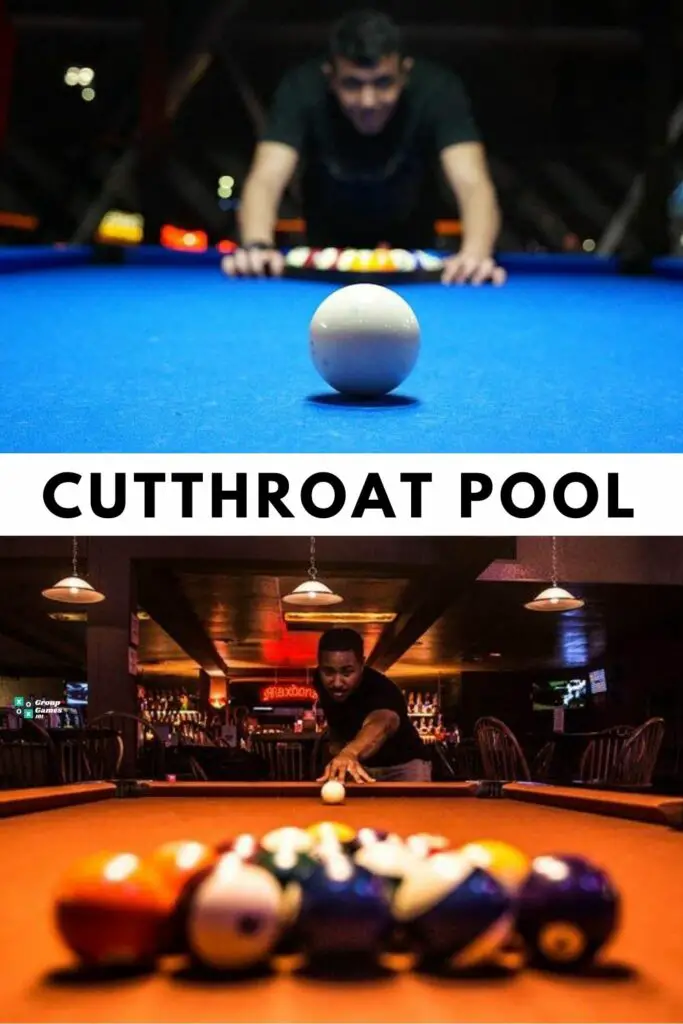
An easy guide for an easy game, let’s quickly have a look at how to go about playing and learning the Cutthroat pool rules and what are some points you should remember before getting started. The guidelines are created with reference to a standard 3-player, 3 set game.
Closing The Sets
Closing a set means claiming a set by a player. A player can close a set only if at least one ball from the remaining two sets have been pocketed.
For instance, if player A has pocketed the ball 2, set 1-5 is off-limits. That player will now have to pocket one ball from either set 6-10 or 11-15 to close the set that is unpotted.
Let’s say player A misses a shot, and player B pockets 3 and 11 in the same turn, which means player B has closed set 6-10. That leaves player A with a single set — 11-15 and player C gets the set 1-5 by default.
Once all sets are closed by players, the real game begins. The objects balls that have already been sacked stay down and with each turn, players try to pocket object balls from the opponent’s sets.
Cutting One’s Own Throat
It is possible that a player accidentally pots an object ball from their own set, and there are also instances when players strategically pot their own ball to get a shot of their opponent’s ball. Let’s understand both by continuing the above example.
Let’s suppose during the game players A and B are left with two balls each in their respective sets.
- Player C is already eliminated.
- Player A shoots to pocket object ball 3 but ends up pocketing ball 13 instead that belongs to A’s set.
- This weakens A’s stance and only one ball remains in Player A’s set.
Now, let’s say A misses the shot and Player B shoots next. B realizes that pocketing A’s last ball will require two turns, so, with a strategic objective, B pockets the object ball 3.
This leaves both players with one ball but considering that the shot was planned, player B has an edge and can now easily pocket player A’s last ball, having brought it closer to the sack.
This technique is called ‘cutting one’s own throat’ which often happens accidentally and is rarely used intentionally by players who are extremely good at the game.
Scratching And Spotting
Scratch is when a player pockets or knocks a cue ball off the table.
The consequence of a scratch is severe for a player. All the opponents get to spot an already pocketed ball from their claimed sets. This can even bring a player back to the game or level the game for a player (scratcher) who was about to win.
Breaking A Tie
A tie is a rare case in Cutthroat pool as it requires only a cue ball to remain on the pool table after the final shot accidentally pockets the last balls of both the shooter and the opponent. To be able to break the tie, every player has to be brought back to the game by spotting one object ball from each set. This way, the game continues.
Cutthroat Pool Scoring And Winning
For a single game, no scoring is involved since the player who is left with one or more object balls when all opponent sets are pocketed wins.
However, when multiple games are played, the winner receives 3 points, the runner up receives 2 points, and the player who gets eliminated first receives 1 point. The scores keep adding up in this manner after every game.
The player with the maximum score wins.
Frequently Asked Questions About Cutthroat Pool
Can We Play Cutthroat Pool With More Than Three Players?
Since it’s a 15 ball game, it can be played among several players as long as the object balls are evenly distributed in sets. From 2 players with seven balls in each set to 7 players with two balls in each set, the cutthroat pool is a flexible multiplayer game.
What Are The Variations In Distributing Sets Among Players In Cutthroat Pool?
Besides the standard rules for claiming sets mentioned in the Guidelines section, there are two commonly adopted ways to assign.
One option is to let the first player that pockets any object ball get the chance to claim a set and the second player to pocket a ball gets to choose one of the remaining two sets. Another option is to, by default, assign set 1-5 to the breaking shooter and the following sets, respectively to players next in turn.
What Happens If An Object Ball Is Knocked Off The Table In Cutthroat Pool?
In case of knocking an object ball off the table, the ball is spotted back. However, if it belongs to the shooters set, the ball is pocketed as a penalty to the shooter.
Alternative Game Suggestions
After a long night and obsessively too many rounds of Cutthroat, if you feel you need a change of pace and game, we have got you covered till the very end!
If you’re one who wants to sit down and relax, rely more on strokes of luck and less on strategy, card games like Five Crowns is your winner. However, if you’re still pumped up with zest and want to raise the competitive spirits, you may prefer hitting a bullseye in Cricket Darts.
Rules? Check. Equipment? Check. Backup games? Check. Well, that leaves you with one thing to do before a fun night of pool, buckle up, and gather your players!

